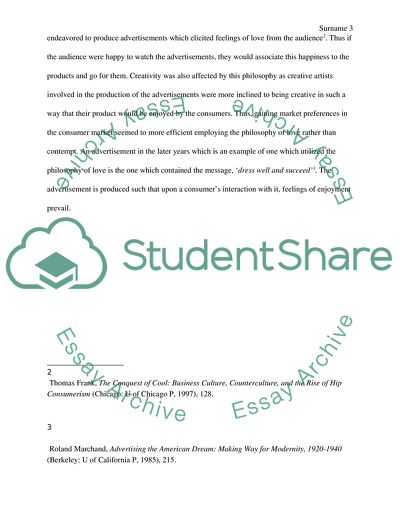Cite this document
(Ad Analysis of the 1st Part of XX Century Essay Example | Topics and Well Written Essays - 2250 words, n.d.)
Ad Analysis of the 1st Part of XX Century Essay Example | Topics and Well Written Essays - 2250 words. https://studentshare.org/history/1875334-ads-analysis
Ad Analysis of the 1st Part of XX Century Essay Example | Topics and Well Written Essays - 2250 words. https://studentshare.org/history/1875334-ads-analysis
(Ad Analysis of the 1st Part of XX Century Essay Example | Topics and Well Written Essays - 2250 Words)
Ad Analysis of the 1st Part of XX Century Essay Example | Topics and Well Written Essays - 2250 Words. https://studentshare.org/history/1875334-ads-analysis.
Ad Analysis of the 1st Part of XX Century Essay Example | Topics and Well Written Essays - 2250 Words. https://studentshare.org/history/1875334-ads-analysis.
“Ad Analysis of the 1st Part of XX Century Essay Example | Topics and Well Written Essays - 2250 Words”. https://studentshare.org/history/1875334-ads-analysis.


